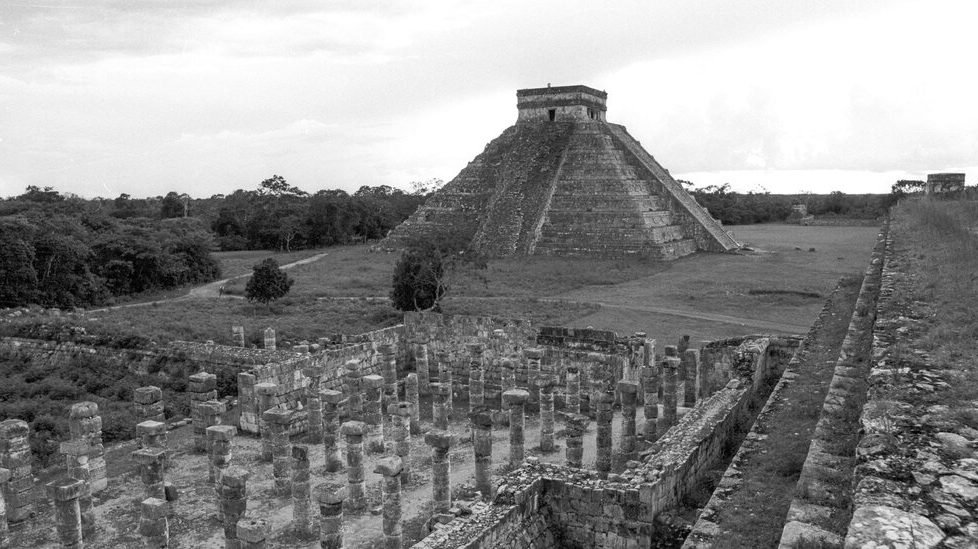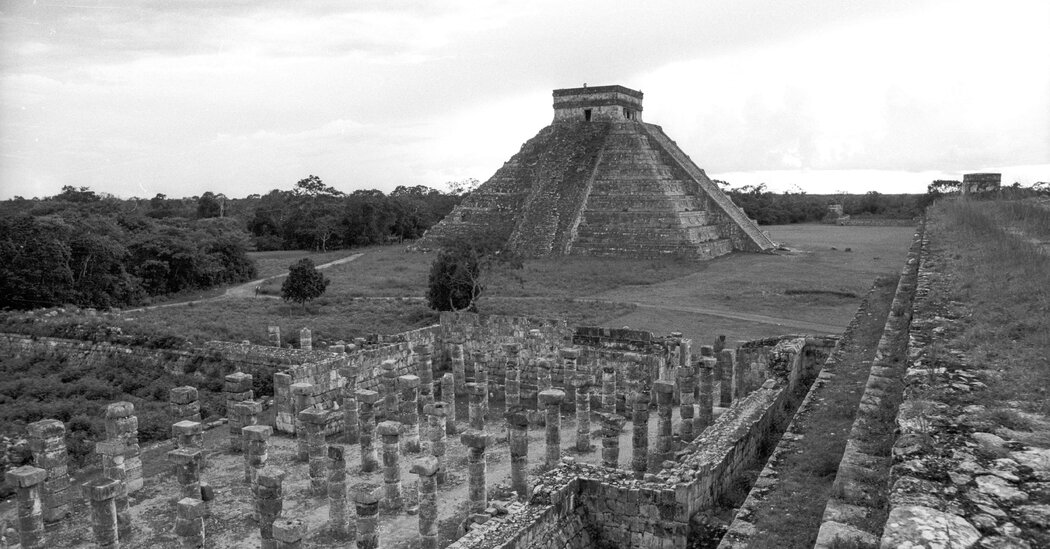Ancient Genomes Reveal Which Children the Maya Selected for Sacrifice


In the spring of 1967, workers building a small airport behind Chichén Itzá, the ancient Maya city in Mexico, ran into a problem: Their excavations had uncovered human remains in the pathway of the proposed runway. The airport was set to serve V.I.P.s who wanted to visit Chichén Itzá. But with the remains so close to a major archaeological site, the work had to be halted until the bones could be examined.
Any hope for a quick resolution dissolved when archaeologists who were called to the scene uncovered a chultún — an underground rainwater-storage container that, in Maya mythology, was viewed as an entrance to the subterranean land of the dead. Connected to the cistern was a cave containing more than 100 sets of human remains, almost all belonging to children. In a push to finish the airport, researchers were given just two months to excavate and exhume the cache of bones.
Nearly 60 years later, ancient DNA extracted from 64 of the children is offering new insights into the religious rituals of the ancient Maya and their ties to modern descendants. In a paper published on Wednesday in the journal Nature, an international cohort of researchers revealed that the children — sacrificial victims killed between 500 and 900 A.D. — were all local Maya boys that may have been specifically selected to be killed in sibling pairs.
“These are the first ancient Maya genomes to be published,” said Johannes Krause, an archaeogeneticist at the Max Planck Institute for Evolutionary Anthropology in Leipzig, Germany. The DNA work provided a previously unseen glimpse into the identities of the sacrificed children. “One feels quite moved by such a finding,” Dr. Krause said, noting that he himself has a young son.
The search into the genome of the Maya boys did not start as an exercise in ancient Maya rituals. In the mid-2000s, Rodrigo Barquera — now an immunogeneticist at the Max Planck Institute — was hoping to discover the genetic legacy of Mesoamerica’s deadliest pandemic.
In 1545, an outbreak of Salmonella enterica spread like wildfire across what is now Mexico. Over the next century, the disease killed up to 90 percent of the Indigenous population. Pandemics like these often leave their mark on the immune genes of survivors. To uncover this genetic legacy, Dr. Barquera and his colleagues needed to compare the DNA from the precolonial remains with that of people who were born after the calamity.
The children found in the chultún were one such pre-Columbian group certain to have never come across the pandemic while alive. So in 2015, the team received permission to destroy a small part of their skulls to sequence DNA.
The team first used DNA to determine the sex of the children as part of routine sequencing. The skeletons of people under a certain age do not offer much information about biological sex, so this aspect of the children was a mystery.
It took a year for those first results to come in, and when they did: “Wow,” Dr. Barquera said.
All 64 of the skulls belonged to boys. “We kept rerunning the tests because we couldn’t believe that all of them were male,” he said. “It was just so amazing.”
Early archaeologists studying the Maya had proposed that the culture was preoccupied with sacrificing young virgin women. That theory has been challenged in recent decades with the discovery that most people sacrificed in the sacred cenote — a natural sinkhole at Chichén Itzá — were children.
“That obviously flew in the face of the argument that it was mostly young virgin women being thrown into the cenote,” said Jamie Awe, an archaeologist at Northern Arizona University in Flagstaff who was not involved in the study. The obsession with virgins in archaeological circles most likely arose from a combination of colonial ideas and limited data, he said.
Now, DNA confirms that the children from the chultún were all male, he said, adding: “We would not have known who they were had the DNA study not been conducted.”
Subsequent genetic testing also showed that many of the boys were related to one another, and among them were two sets of identical twins. Why these boys were chosen for sacrifice is unknown, Dr. Barquera said. But it is possible that siblings, or close relatives, were selected to reflect the trials of the Hero Twins, key figures in Maya cosmology who underwent cycles of sacrifice and rebirth.
“Rituals from ancient times tend to be particular,” Dr. Awe said. “This study indicates that for some religious ceremonies, it was important that only male children were selected for sacrifice.”
The boys are now giving back to modern Maya who live around Chichén Itzá, Dr. Barquera and his colleagues found. The team compared the boys’ DNA with that of Maya living in Tixcacaltuyub, a town around an hour’s drive from Chichén Itzá, and found strong genetic continuity between the two groups. As Dr. Barquera expected, the 1545 pandemic did leave a mark on the Maya, bequeathing Tixcacaltuyub residents with at least one genetic variant associated with salmonella immunity.
Dr. Barquera and a few colleagues traveled to Tixcacaltuyub to share their findings at local schools and with study participants. They also shared previous genetic work conducted by other groups indicating that ancestors of the Maya first moved into the region around 9,000 years ago. Together, the genetic work hints that the peninsula’s large population experienced little migration or genetic exchange since the Maya’s earliest ancestors first moved in.
DNA provides “clear proof that these people are descendants of the folks that developed one of the world’s most accomplished civilizations,” Dr. Awe said.
Dr. Barquera added that the study participants were thrilled to receive confirmation that they were genetically related to the builders of Chichén Itzá.
“People who live close to these archaeological sites ask, ‘Why do you have so much respect for the people who built these sites, and then treat the Indigenous people who live around them like inferiors?’” he said.
With these DNA results, he added, they can now say: “Look, we’re related to the ones who made these pyramids. So maybe stop being racist toward us.”
The post Ancient Genomes Reveal Which Children the Maya Selected for Sacrifice appeared first on New York Times.
